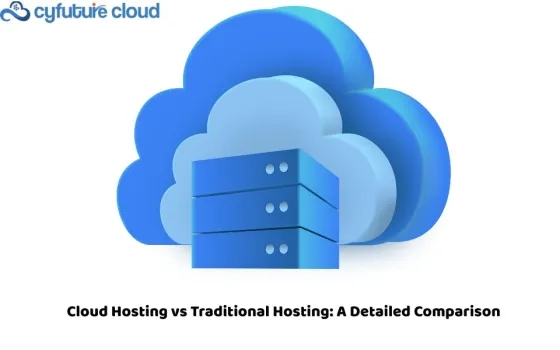There are more than 854 million people with mobile money accounts in 90 countries, and there is $1.3 billion worth of transactions done through these accounts every day. Sub-Saharan Africa has led the charge in mobile money technology with 21% of the adult population having a mobile phone account for transferring funds including digital lending and insurance.
According to recent report by World Bank, it has been estimated cross-border remittances worldwide will exceed USD $600 billion by 2021. The average global cost of sending these funds in cash is 6.8% whereas a fully digital transaction drops the cost to 3.3%.
The next "normal" condition will pose new challenges for banks. Banks need to get bigger and more efficient. Neither of these is easy. And execution is critical: poor decisions can destroy much value. Not executing well, risks having too few options during the next downturn.
One way to solve this dilemma is to execute well on mergers and acquisitions, so that the bank gets bigger but does so wisely. But many banks struggle with M&A. Merging two organizations requires more than simply adding a piece of business from one bank into another; it also means combining the practices that govern these businesses. Furthermore, a bank's performance typically declines after an acquisition; the reason is almost certainly not due to asset quality but rather because of integration-related issues.
Execution with precision is critical if mergers and acquisitions are going to be a major part of the solution for banks.
An alternative may be to grow organically, not through mergers and acquisitions, but by expanding existing business lines or entering new areas. This approach has advantages: organic growth tends to generate better returns than M&A on average. Finally, organic growth tends to be more productive and to leave less room for blunders. The benefits that accrue from growth through mergers and acquisitions must be seen in context.
To grow organically, banks need to use their existing business lines as platforms for innovation and expansion.
The future may require banks to be nimbler and more innovative. This is because banks that can't adapt their existing business lines will find it difficult to expand in a meaningful way—especially when competition in banking is about to intensify: new business models are springing up everywhere, including automated financial advice from startups, as well as new payment systems. At the same time, digital technology is transforming the nature of banking as an industry. This means banks will have to be more creative and agile—or they could risk being left behind by new entrants with disruptive business plans.
Organizations can only grow successfully if they are innovative and agile.
For banks, it will be essential to find ways to grow their businesses through innovation and agility. This is not easy. It's often a mistake for a bank to believe that new business lines will generate similar returns to the existing ones; in many instances, they won't. And successfully innovating within an existing business line may be just as hard as launching a new product from scratch. As an antidote for the challenges, banks should focus on driving costs out of existing business lines rather than seeking growth from outside—even if that means sacrificing revenue in the short term.
For many banks, becoming more efficient will be essential to finding growth opportunities. But efficiency is not enough: banks must also be able to handle rapid changes in technology and regulation. Organizational structures, processes, and culture may need to change accordingly.
The future of banking will entail much more than simply staying relevant as a financial services provider: banks will have to adapt themselves and their businesses to the changing global environment.
A key challenge for banks will be finding ways to keep up with the pace of change.
Banks are in a constant struggle to remain relevant and profitable: they must balance the need for growth against their existing business lines. But there is little doubt that banks will become more diversified as they grow— and this is unlikely to change anytime soon. Yet, while it may be necessary for them to do this, it won't be easy: many banks face a series of challenges that could keep them from meeting their growth targets.
One major challenge is technology: even though technology has become increasingly important to banking, it has not yet matured enough for banks to grow through innovation and agility. Many banks are still reliant on legacy systems rather than innovative technologies, which limits growth. But technology is also core to the operations of many banks: in addition to using it for financial services, they use it in their operations and security functions, which makes change more difficult as well. When banks do make major technology investments—such as deploying a mobile banking app—they run into another problem: skills shortages that can slow down implementation.
How can Banking as a service (BaaS) help Banks?
BaaS is a new concept and has seen rapid adoption by many banks across the globe in the last 2-3 years. The main motive behind this idea was to provide an enhanced customer experience without spending too much time and money on technology yet leveraging the latest technologies available globally. Also, as per Gartner Report 85% of banking customers' digital channels are now handled by an alternative channel to the bank's branch.
It is a recent concept of providing IT solutions in a cloud model which gives customers full control on how they want their software/service to be and can manage it with just a few clicks. The main advantage of this approach is that with the entire platform delivered in a managed service model; the business teams can focus on launching products as they need with a clear visibility on the unit cost of on-boarding a customer rather than budgetary capex spends that may overrun significantly.
The two main objectives of BaaS are:
1. To provide a common base solution that eliminates the need for banks looking to go digital quickly without having to go through a long gestation period of building their teams, infrastructure and core services.
2. To eliminate the problems associated with scalability of the platform in terms of users and transaction volumes that are borne by legacy platforms
There are three key aspects that constitute a Banking as a service platform: Customer Dashboard, Core Platform & Business Process Management System (BPMS).
1. Customer Dashboard:
It is a web-based application which provides the customer with an overall view of their relationship with the bank. This can be accessed via any internet enabled device and the easy-to-use dashboard allows customers to do their operations. The users will have all the details of their accounts and transactions available to them at one place. It also provides facilities like mobile payments, fund transfers, card management and money market operations among others.
2. Core Platform:
It is a fully hosted software which allows banks to provide a complete range of banking services to customers. The core module hosted by the BaaS provider offers banks on-the-fly product and account setup functionalities with a real-time GL for accounting purposes. The managed core platform will be updated by the BaaS provider with newer features/ technical upgrades without the need for major downtimes and additional planning making it much easier to maintain the solution. The SaaS based solution can also be easily scaled up or down depending upon banks future requirements.
3. Business Process Management System (BPMS):
the BPMS acts as a central repository for all the business processes & rules to be defined across products – deposits or lending within the bank. It allows the banks to configure various business rules for multiple product offerings including interest-based term deposits, loans underwriting and even customer loyalty products. The BPMS built on top of core platforms in a BaaS solution offers the bank the flexibility to tweak the customer on-boarding process or business rules dynamically and allow them to use data for micro-segmentation of their prospective customers.
Ultimately, BaaS enables an ecosystem for Banks and Fintechs to deliver better services to their customers across a wider product offering while enjoying the operational benefits of:
1. A Pay per use model reduces the upfront cost to build and maintain.
2. Cloud computing models to help business focus on their core operations.
3. Lower Unit Cost per Customer due to economies of scale optimized by the BaaS provider.
Many businesses are reluctant to adopt new technologies due to the fear of large initial investment. With BaaS, a bank or fintech firm can instantly transform their existing IT infrastructures and use the latest technology with minimal upfront investments creating a WIN-WIN for business and tech teams in the bank or fintech.
The Blog is authored by

Udeet Bhagat
Vice President at PureSoftware and Business Head Arttha



















